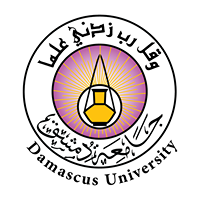اشترك بالحزمة الذهبية واحصل على وصول غير محدود شمرا أكاديميا
تسجيل مستخدم جديدPerturbative renormalization of staggered fermion operators with stout improvement: Application to the magnetic susceptibility of QCD
300
0
0.0
(
0
)
اسأل ChatGPT حول البحث

ﻻ يوجد ملخص باللغة العربية
We calculate the fermion propagator and the quark-antiquark Greens functions for a complete set of ultralocal fermion bilinears, ${{cal O}_Gamma}$ [$Gamma$: scalar (S), pseudoscalar (P), vector (V), axial (A) and tensor (T)], using perturbation theory up to one-loop and to lowest order in the lattice spacing. We employ the staggered action for fermions and the Symanzik Improved action for gluons. From our calculations we determine the renormalization functions for the quark field and for all ultralocal taste-singlet bilinear operators. The novel aspect of our calculations is that the gluon links which appear both in the fermion action and in the definition of the bilinears have been improved by applying a stout smearing procedure up to two times, iteratively. Compared to most other improved formulations of staggered fermions, the above action, as well as the HISQ action, lead to smaller taste violating effects. The renormalization functions are presented in the RI$$ scheme; the dependence on all stout parameters, as well as on the coupling constant, the number of colors, the lattice spacing, the gauge fixing parameter and the renormalization scale, is shown explicitly. We apply our results to a nonperturbative study of the magnetic susceptibility of QCD at zero and finite temperature. In particular, we evaluate the tensor coefficient, $tau$, which is relevant to the anomalous magnetic moment of the muon.
قيم البحث
اقرأ أيضاً
In this paper we present the perturbative computation of the difference between the renormalization factors of flavor singlet ($sum_fbarpsi_fGammapsi_f$, $f$: flavor index) and nonsinglet ($barpsi_{f_1} Gamma psi_{f_2}, f_1 eq f_2$) bilinear quark o
perators (where $Gamma = mathbb{1},,gamma_5,,gamma_{mu},,gamma_5,gamma_{mu},, gamma_5,sigma_{mu, u}$) on the lattice. The computation is performed to two loops and to lowest order in the lattice spacing, using Symanzik improved gluons and staggered fermions with twice stout-smeared links. The stout smearing procedure is also applied to the definition of bilinear operators. A significant part of this work is the development of a method for treating some new peculiar divergent integrals stemming from the staggered formalism. Our results can be combined with precise simulation results for the renormalization factors of the nonsinglet operators, in order to obtain an estimate of the renormalization factors for the singlet operators. The results have been published in Physical Review D.
We define a family of Schroedinger Functional renormalization schemes for the four-quark multiplicatively renormalizable operators of the $Delta F = 1$ and $Delta F = 2$ effective weak Hamiltonians. Using the lattice regularization with quenched Wils
on quarks, we compute non-perturbatively the renormalization group running of these operators in the continuum limit in a large range of renormalization scales. Continuum limit extrapolations are well controlled thanks to the implementation of two fermionic actions (Wilson and Clover). The ratio of the renormalization group invariant operator to its renormalized counterpart at a low energy scale, as well as the renormalization constant at this scale, is obtained for all schemes.
We discuss a 3-flavour lattice QCD action with clover improvement in which the fermion matrix has single level stout smearing for the hopping terms together with unsmeared links for the clover term. With the (tree-level) Symanzik improved gluon actio
n this constitutes the Stout Link Non-perturbative Clover or SLiNC action. To cancel O(a) terms the clover term coefficient has to be tuned. We present here results of a non-perturbative determination of this coefficient using the Schroedinger functional and as a by-product a determination of the critical hopping parameter. Comparisons of the results are made with lowest order perturbation theory.
The chirally rotated Schrodinger functional ($chi$SF) renders the mechanism of automatic $O(a)$ improvement compatible with Schrodinger functional (SF) renormalization schemes. Here we define a family of renormalization schemes based on the $chi$SF f
or a complete basis of $Delta F = 2$ parity-odd four-fermion operators. We compute the corresponding scale-dependent renormalization constants to one-loop order in perturbation theory and obtain their NLO anomalous dimensions by matching to the $overline{textrm{MS}}$ scheme. Due to automatic $O(a)$ improvement, once the $chi$SF is renormalized and improved at the boundaries, the step scaling functions (SSF) of these operators approach their continuum limit with $O(a^{2})$ corrections without the need of operator improvement.
We report on a non-perturbative computation of the renormalization factor Z_A of the axial vector current in three-flavour O(a) improved lattice QCD with Wilson quarks and tree-level Symanzik improved gauge action and also recall our recent determina
tion of the improvement coefficient c_A. Our normalization and improvement conditions are formulated at constant physics in a Schrodinger functional setup. The normalization condition exploits the full, massive axial Ward identity to reduce finite quark mass effects in the evaluation of Z_A and correlators with boundary wave functions to suppress excited state contributions in the pseudoscalar channel.
سجل دخول لتتمكن من نشر تعليقات
التعليقات
جاري جلب التعليقات


سجل دخول لتتمكن من متابعة معايير البحث التي قمت باختيارها


